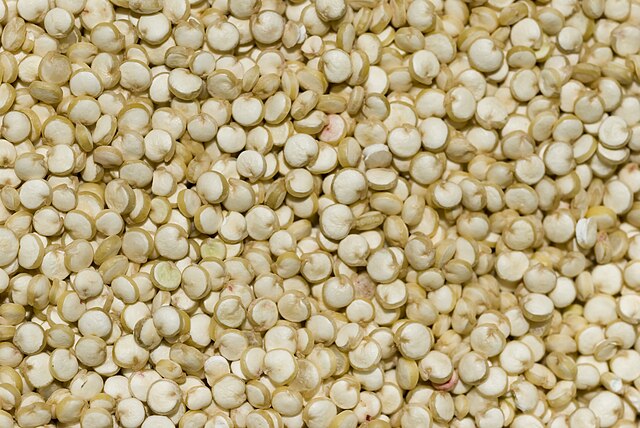All About Quinoa & How to Cook It

By Nell Jones - daughter, writer, graduate, and professional
Quinoa is a seed native to Peru that was once considered “the mother grain” by the Incans and is now considered a “superfood” by most health-conscious people. It became popular in the last decade because of its role as a healthier carb.
Quinoa’s gluten-free grain property makes it a good substitute for rice and other kinds of pasta. My favorite characteristic of it is that it can be used in almost every meal, helping you achieve a healthy, wholesome diet.
How Nutritious is Quinoa?
It is a source of fiber, iron, different vitamins, and, most of all, protein. A cup of quinoa has eight grams of protein, full of all the amino acids.
It is a good substitute for rice because while both have gluten-free properties, quinoa has many more antioxidants. The fiber levels in quinoa are also beneficial since they assist digestion, which lowers cholesterol.
One cup contains about 20% of the recommended daily fiber intake.
The Easier Carb
Not only is quinoa incredibly nutritious and better for you, it is also just more convenient to make and keep. I like quinoa because of how fast it cooks. The total time to prepare is at least fifteen minutes, which is way shorter than its alternative, rice.
I can easily make time in my busy college schedule to cook quinoa, and I do. It also stores better than most other grains.
It doesn’t dry out and still tastes fresh after a few days in the fridge. This is perfect for when I want to make a large serving at the beginning of the week and keep it in my fridge for when I use it for meals.

How To Cook Quinoa
It is important to rinse the quinoa before cooking it because the seeds are coated with natural chemicals that protect the plant from diseases and bacteria. This coating tastes bitter, so running it under cold water is important until it is clear before you cook it.
You want to cook the quinoa in a two-to-one ratio with water. So, for 1 cup of quinoa, use 2 cups of water. Put the water and quinoa in a medium pot and heat on medium to high until they are just about to boil, then add a pinch of salt.
Once it boils, reduce the heat to simmer until all the water is absorbed, which should take about fifteen minutes.
After absorbing the water, set it aside for about five minutes and cover it. Covering it at the end instead of when it is cooking helps to avoid the mushy result that you can sometimes get when cooking quinoa.
At this point, fluff it with a fork and it is ready to serve or can be put aside in the refrigerator for later use.
My Favorite Quinoa Meal
I love to include quinoa in my meals because I notice that it fills me up fast and keeps me full for a while. While it can be incorporated into many meals, my favorite quinoa-filled meal is breakfast.
As we all know, breakfast is the most important meal of the day, and quinoa is a great way to be full and energized early in the morning. One of my favorite eateries at school makes these breakfast “scrambles” with quinoa.
It serves more as a brunch because it fills me up for most of the day, which is important when I have a packed schedule of classes and study until dinner time. I’ve mimicked the meal at home to save money on a college budget. And it’s easy to make!
Usually, I prepare the quinoa at the beginning of the week to store it in my fridge and use it when I need it. With this recipe, you can include a lot of leftovers that you might have stored away in your fridge, like vegetables from the night before.
In the recipe linked below, I like to exchange rice for quinoa because of the extra nutrients the quinoa gives.
Other Recipes
While breakfast quinoa is my favorite, there are many ways to prepare quinoa and benefit from the nutrients and delicious meals with carbs that you won’t feel guilty about. Below are some other ways to prepare quinoa for lunch and dinner.
Lunch:
Dinner:
Pan Seared Chicken Breasts Over Quinoa
















